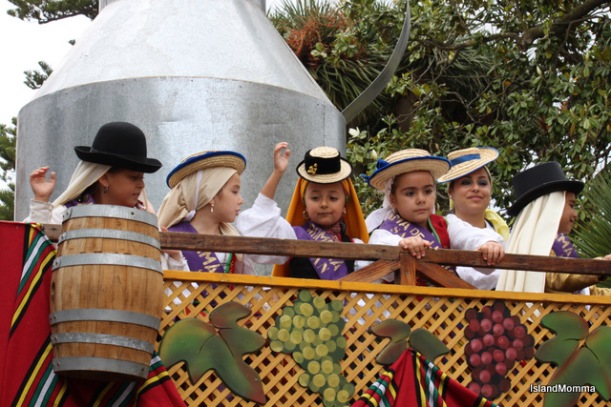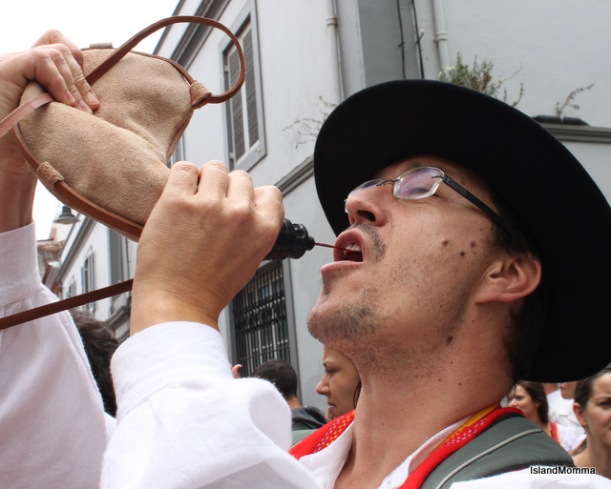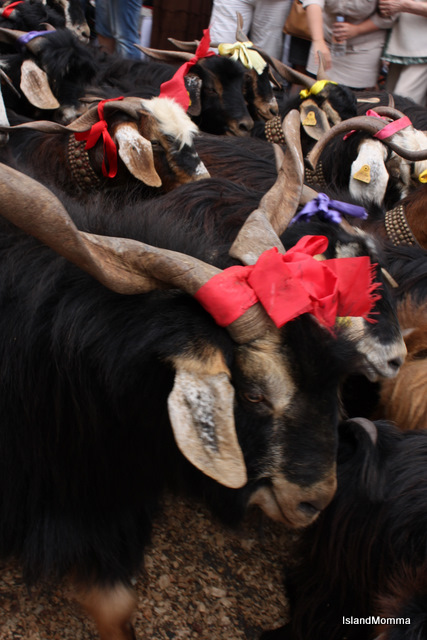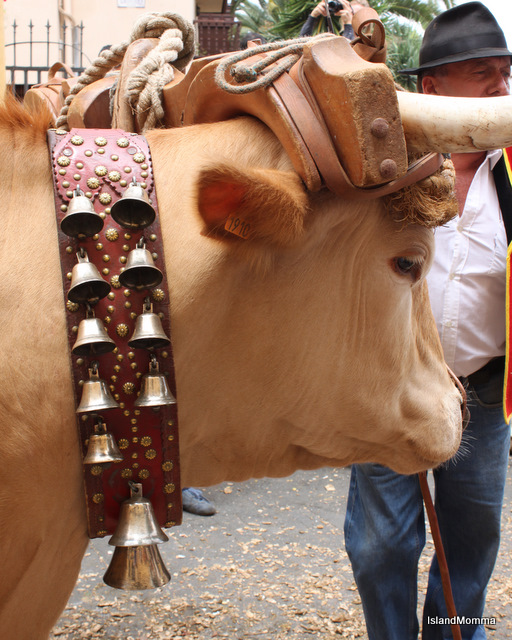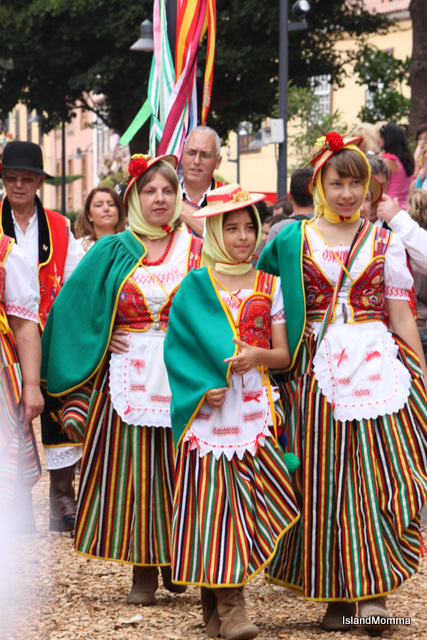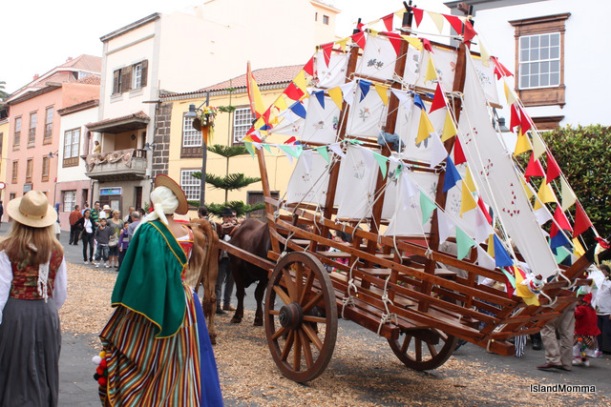After you’ve lived in the Canary Islands for a while, you begin to understand that the philosophy that enjoyment is an important part of life, and at times takes precedence over work, is deeply ingrained in the culture.
This knowledge gives me one of my mugwump moments. Where we came from, didn’t we all feel pressured by family commitments, traffic jams, work, paperwork, taxes, the weather, medical checkups, all the stuff which makes up modern life? And don’t we yearn for more leisure time to relax and reconnect with ourselves? That said, how frustrating is it to know that the bank will be closing early for half of February because it is Carnaval, or that nothing happens at the town hall in August? If you live here and are a slave to work, really, you’ll end up being more stressed than you were in London or New York. It’s ain’t always easy. I can see, and I’ve experienced both approaches to this philosophy, and I don’t have an answer, but I’m leaning towards the incorporation of pleasure into one’s life being a right rather than a reward. I don’t see that that should exclude efficiency.
The other thing which appeals is that enjoyment and fun are not exclusively for the young!
Many, if not most, towns and villages have two annual fiestas, and that’s not including Christmas, Easter, Carnaval, Constitution Day, New Year, All Saints, Labor Day and the Immaculate Conception (off the top of my head, I’ve probably missed a few there). Most of them sound religious, don’t they, and obviously they have some religious feast as their foundation, but they have evolved into something more. The nightly verbenas (open air balls) are now as much a matter of salsa and pop as of traditional music, but the important thing is that there is some degree of enjoyment for everyone. Even those religious, elderly women who weep as the plaster saint is carried by, I presume, are weeping in joy and not agony.
A romeria, in comparison with other festivals, is usually connected to the earth, blessings are requested or thanks given for a good harvest, and the high point is a procession to or from a church ostensibly for that purpose. Although there are priests and plaster saints aplenty I think it’s fair to say that the experience is more a) spiritual and b) fun than religious, for most people. I can’t imagine that there is anywhere else on the island where this is as important as in La Laguna.
This city was the original capital of the island, founded around 1496, shortly after the Conquest. Despite being a World Heritage Site and having the oldest university in the archipelago, it’s still a country town at heart, even though it lays claim to the title of “city”. Santa Cruz, the current capital, is where all the hustle and bustle is. La Laguna’s old and historic center is tranquil by comparison, and the perfect setting for a celebration like this.
The best way to arrive in La Laguna, is by the impressive tranvía (tram) service. These sleek, modern coaches glide their way effortlessly between the two cities with the occasional clang of what sounds like an old-fashioned trolley bell, and by some miracle, despite being so modern, seem to fit into the surroundings. Parking is difficult at the best of times, but I didn’t doubt that on the day of the Romeria it would be impossible. The tram rides right up to the edge of the historic district. It’s perfect, and this is where my experience began.
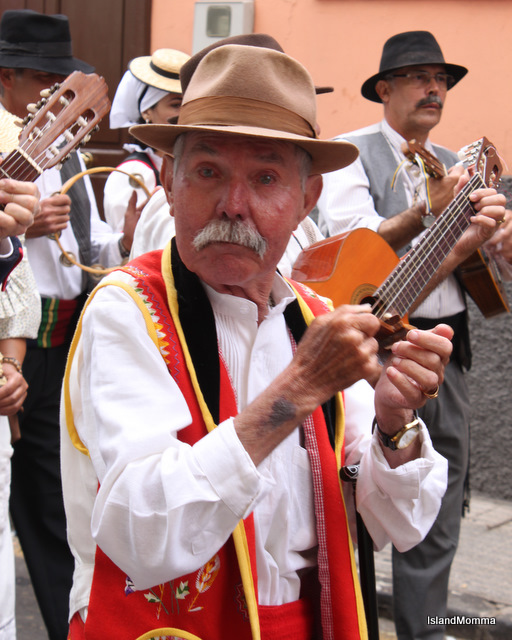 My favorite snap of the day. I wonder how many romerias and fiestas he has attended!
My favorite snap of the day. I wonder how many romerias and fiestas he has attended!
I drove up to Santa Cruz and hopped onto the waiting tram. There were four or five people in traditional, Canarian dress, not a sight you see in the south outside of the actual parade, so that gave me a little buzz. The coach wasn’t too full, and I was chuffed when a group of older ladies, in traditional costume entered a couple of stops later and took the empty seats around me. Their attire comprised long skirts and white, frilly blouses; some with bodices over the top of the blouse, some with petticoats peeping from their skirts and some with traditional felt or straw hats. I know that different islands and different regions within an island have their own dress, so it seemed like a great opportunity to ask them. It wasn’t to be, however.
As soon as the tram gently jerked into motion they began to sing Canarian folk songs, and apart from sharing a few jokes they didn’t let up until we arrived at the terminal, close the city’s historic district. As they alighted from the tram and swayed their way down to the procession’s starting point, they were still singing, hardly missing a beat. I was so enthralled at being on the very edge of this delightful, smiling musical group that I didn’t even think to ask if it was ok to take a picture. Confession to make: they were on the same tram going back to Santa Cruz, and they had the entire coach singing along with them, AND I remembered to whip out my phone to record it…….then promptly deleted it by mistake :=(
They certainly gave me a taste of what was to come! I followed them for a while, and then they forked off presumably to gather at the beginning of the parade, whilst I wandered around to explore streets with which I was familiar, but which had taken on a new vibe this day. My first reaction as I came to the main street was that they had left the dead and scattered flower carpets there from Corpus Christi! Then I realized that what littered the street were wood chippings and not wilted flowers – obviously to help the cleaning up process….I did mention that a romeria is agricultural in theme – that was going to mean horses, oxen and goats.
Those oxen were amazing. I can’t honestly say that I’ve ever given them much, if any, thought before. They were huge and the epitome of strength, pulling carts laden with folk and barbecues and produce, but seemingly gentle. A touch from the long sticks their owners carried was enough for them to change direction slightly if they wandered off course, and some of the leaders were just slips of kids. They had the most beautifully worked collars, and gorgeous, pleading eyes.
Oh, and a word about the goats – yes I do acknowledge the irony of enjoying a heaped plate of goat stew and then going all mushy over them in the parade. That’s another thing which brings out the mugwump in me.
I drooled at bakery shop displays of biscuits and cake made to celebrate the day; I ate delicious stewed goat and drank fruity, local wine; I snapped a few parade entrants making their way to the beginning; I fled from shop selling crafts and local food stuffs on the entry of a huge group of Italian tourists; and I chatted with a few locals about the day. It was overcast, which was a shame photographically, but much more comfortable for those taking part. I was quite stunned by the number of people in traditional garb, around 50% I should think, and not just a passing attempt at it, but beautiful dresses for the women and gorgeous embroidered waistcoats and attire for the men, not to mention the cuteness of the children’s outfits. It spoke of community and pride, and of history and happiness.
After the parade got under way, I lost track of time, it was quite enchanting, I can’t think of a less corny word. On the narrow main thoroughfare there was little chance that crowds could be controlled, and after the pass by the local police car, always the first sign that a parade is beginning, no-one really tried. We stood as close to the procession as we could, darting respectfully into the road from time to time to snap away. At Carnaval that is never allowed. You can see on one of the videos that a hay cart is actually brushing past my telephone. I didn’t back off, so you can see just how close we were.
There were groups of dancers and bands from other islands, (on the videos, sadly, much of the music is drowned out by the chatter of the crowd); there were reconstructions of old farm implements and carts, the carts drawn by oxen; there were herds of goats, bright, colored ribbons tied to their horns and there were wonderful floats from a neighboring town, Tegueste, a taste of their own fiesta to come in September, which took the form of ships (their fiesta celebrates a famous, historic battle, but more of that when the time comes), and there were groups of neighborhood associations and seniors, all proudly wearing their island dress. Local restaurants, and even the casino, had floats representing some aspect of rural life, and then there was the tossing of food to the crowds lining the street, which I described before. Bananas, hard-boiled eggs, watermelon and wine rained down on us (well, the wine was poured into plastic cups and handed down!). Children were lifted onto shoulders, and arms outstretched they set up chants of “A mí, a mí” (to me, to me)……….can you imagine children elsewhere getting excited about bananas and eggs, and not a candy in sight?!
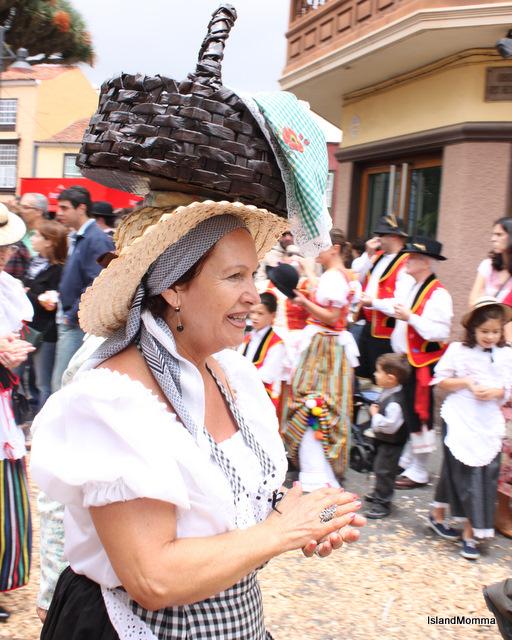 I clearly remember, when we first arrived on the island, seeing women carrying goods this way, but I can’t remember the last time I saw it here other than at fiestas.
I clearly remember, when we first arrived on the island, seeing women carrying goods this way, but I can’t remember the last time I saw it here other than at fiestas.
My feet, despite my sensible shoes, began to ache a little, and I pushed my way down to the beginning of the parade to get some final pictures, and then drifted slowly back to the tram station, still coming across groups singing their hearts out, even though their sashay along the main street was done. After all this time living here I, shamefacedly, have to admit that it is only in recent years that I have begun to really understand the Canarian love for their islands and traditions. What else but pride and love would drive a group of elderly women to sing for something like four or five hours, non-stop! I’ve always been interested to some degree, but now I can, actually, feel it. Maybe it seeps into one’s being bit by bit It stems from a deep love of the land, and of a tight-knit community, far from the Spanish mainland, which has ties to so many other countries that it welcomes us all like long-lost kin.


